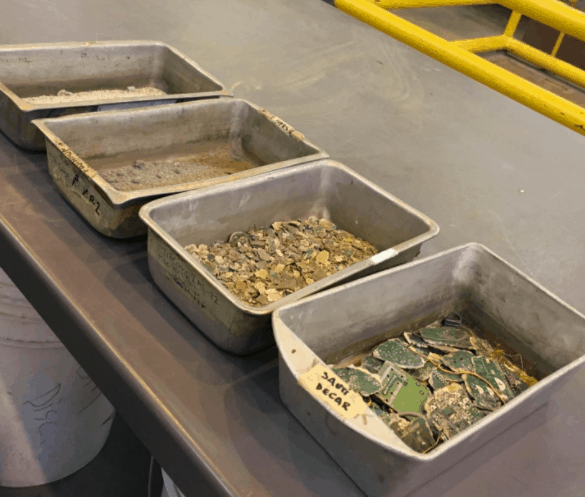Gravity separation promises e-waste recycling boost
A new technique that uses gravity separation to remove fibreglass from resin could make recycling smartphones and other e-waste more efficient.

(Credit: Lou Bosshart)
Developed by researchers at the University of British Columbia (UBC), the method can cleanly separate the materials due to their different densities. While precious metals such as gold, silver and palladium are often recovered from smartphones, the underlying printed circuit boards made from fibreglass and resin are usually sent to landfill or incinerators. By recovering and reusing these materials, the UBC team hopes to greatly reduce the environmental impact of electronics, moving towards a zero-waste smartphone.
"Discarded cell phones are a huge, growing source of electronic waste, with close to two billion new cell phones sold every year around the world and people replacing their phones every few years," said UBC mining engineering professor Maria Holuszko, who led the research.
"The challenge is to break down models that can no longer be reused into useful materials - in a way that doesn't harm the environment."
Register now to continue reading
Thanks for visiting The Engineer. You’ve now reached your monthly limit of news stories. Register for free to unlock unlimited access to all of our news coverage, as well as premium content including opinion, in-depth features and special reports.
Benefits of registering
-
In-depth insights and coverage of key emerging trends
-
Unrestricted access to special reports throughout the year
-
Daily technology news delivered straight to your inbox










Water Sector Talent Exodus Could Cripple The Sector
Maybe if things are essential for the running of a country and we want to pay a fair price we should be running these utilities on a not for profit...